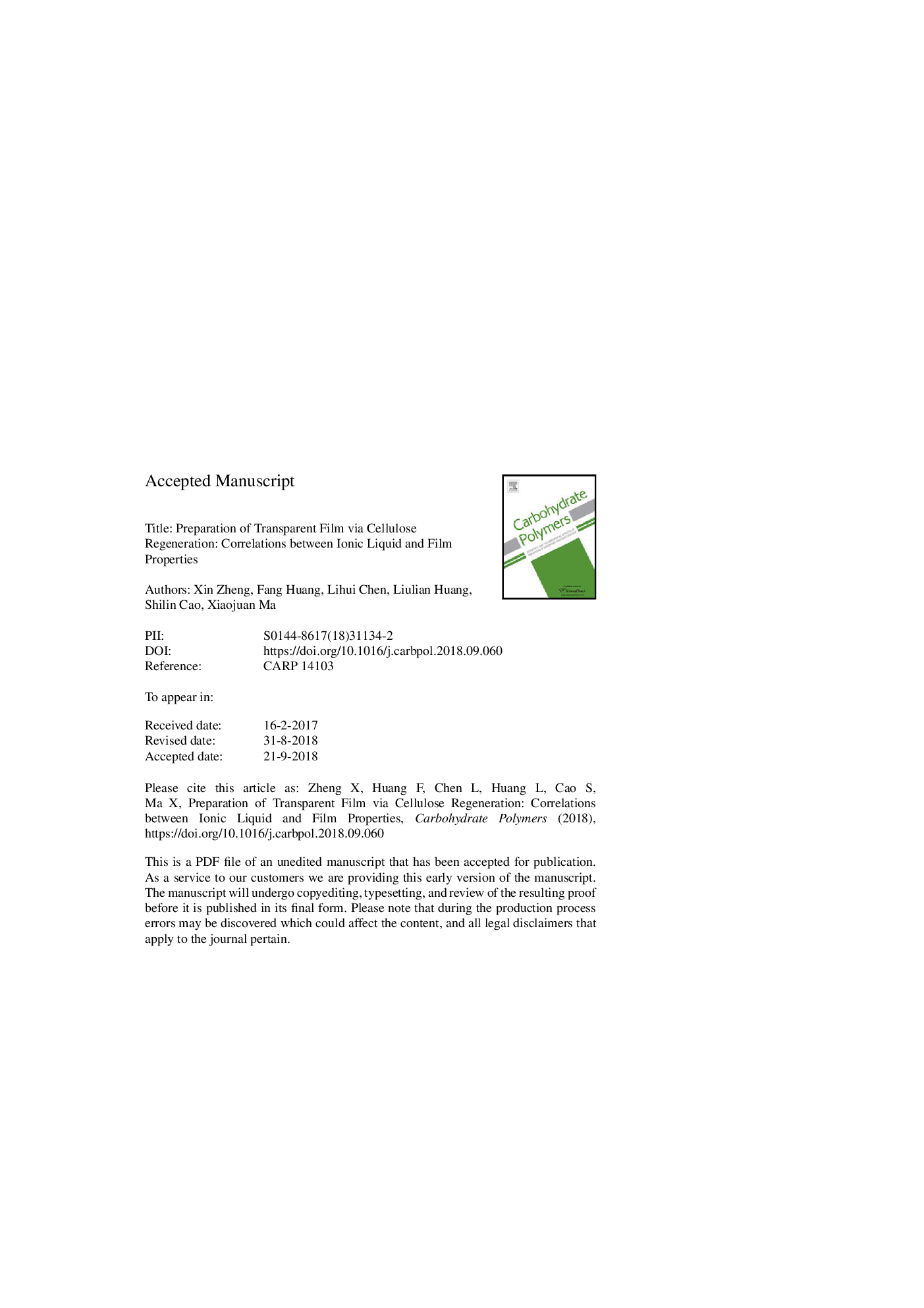| Article ID | Journal | Published Year | Pages | File Type |
|---|---|---|---|---|
| 11027165 | Carbohydrate Polymers | 2019 | 20 Pages |
Abstract
Three ionic liquids (ILs) with increasing dissolution power, 1-butyl-3-methylimidazolium chloride ([Bmim][Cl]), 1-allyl-3-methylimidazolium chloride ([Amim][Cl]), and 1-ethyl-3-methylimidazolium acetate ([Emim][Ac]), were selected for cellulose dissolution and film preparation through regeneration. The physical properties of the films were investigated, and the correlation between the IL used and the film properties was evaluated. The results indicated that the superior cellulose dissolution system, [Emim][Ac], had the most difficult regeneration process (i.e., more time was required for gel formation), followed by [Amim][Cl], and [Bmim][Cl]. On the other hand, the film produced from [Amim][Cl] had the highest crystallinity, transparency, and tensile strength, followed by the films produced from [Bmim][Cl] and [Emim][Ac]. It was inferred that stronger and more ordered molecular arrangements and inter-molecular interactions preferentially occurred during cellulose regeneration from [Amim][Cl] than during cellulose regeneration from [Bmim][Cl] and [Emim][Ac].
Related Topics
Physical Sciences and Engineering
Chemistry
Organic Chemistry
Authors
Xin Zheng, Fang Huang, Lihui Chen, Liulian Huang, Shilin Cao, Xiaojuan Ma,
